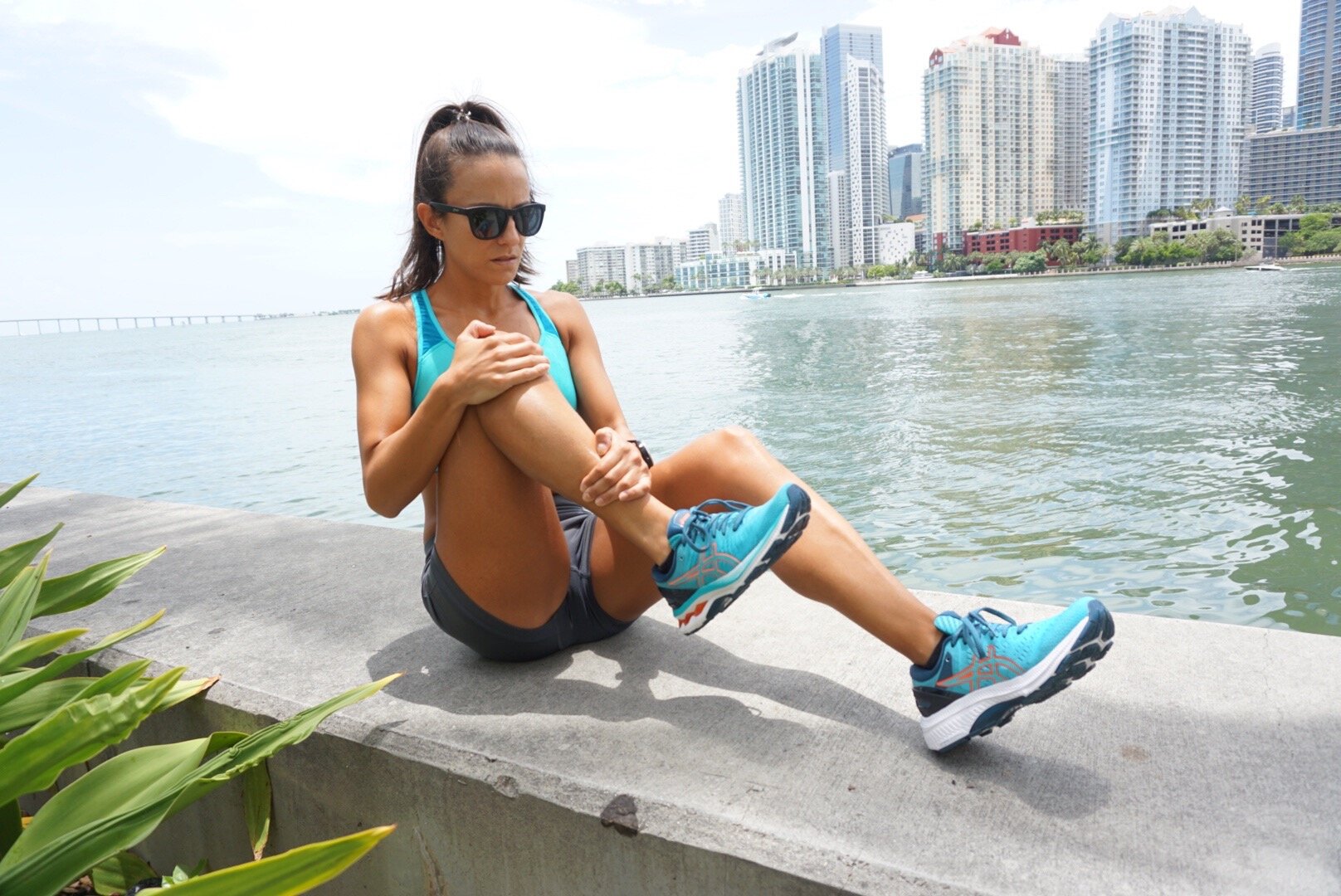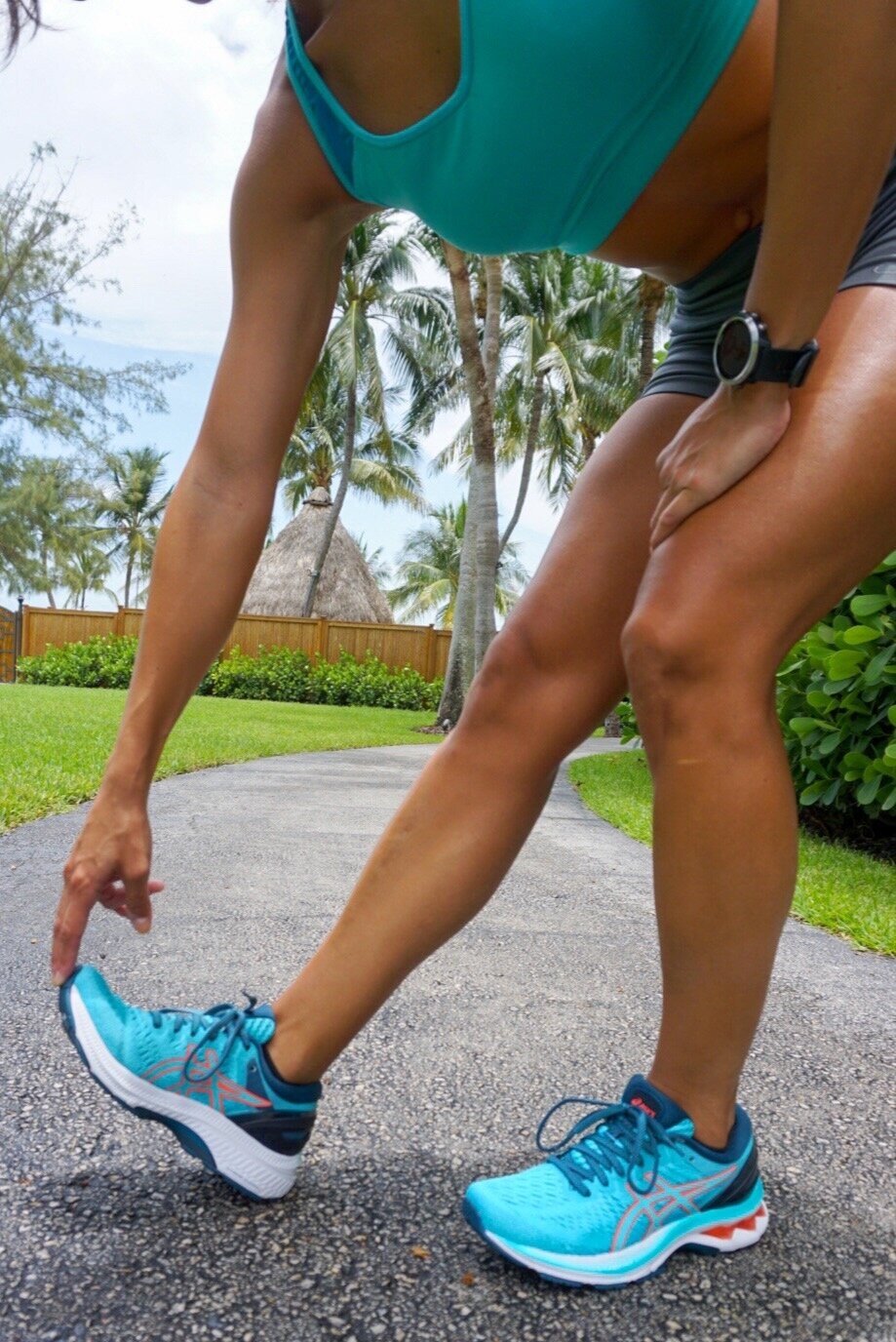IT Band Syndrome (ITBS) is one of the most common injuries in runners, especially in those new to the sport. The Iliotibial Band is a thick tendon that runs from the outside of the outer hip bone all the way down to the outer knee. Repetitive motions, such as in running, can overuse this area and cause inflammation. Read on to learn what steps to take whether you are just experiencing new symptoms or have been dealing with them for a long time.
Read moreShoe Review: Asics GEL-Kayano 27
Sponsored by Zappos Running. All opinions are my own.
No races? No problem! You don’t need a race to keep on running. It’s true we find a good amount of motivation when we sign up for a big race, so it’s normal if we are feeling a bit bummed during this time as mostly all races have been canceled for the year. The thing about running that we often forget is that you can do it year round and get good at it, too—whether or not you have a race on the horizon. I, myself, think of other ways to get motivated. I create a list of short term goals for running that get me just as excited as my race goals do, and remind myself that reaching these smaller goals will only lead to better progress when I can finally race again.
Another way I motivate myself is with cool, new running gear. My favorite part of my wardrobe is running shoes, of course! I recently got another brand new pair from Zappos—the Asics GEL-Kayano 27. I shop from Zappos all the time, since they have an amazingly large selection of everything. I am a VIP member which also means I get free, super fast shipping, plus free returns for a year! I always have the best shopping experience and find everything I am looking for.
Next Level Performance
With the many months we have until our next races, it’s a great time to break up the time into different training blocks. One of the best ways to improve in distance running is to focus on the whole package, which takes time! So having lots of it is a good thing! Running in the Asics GEL-Kayano 27 is a perfect option if you are looking for a high-level stability shoe. My first impression of the shoe was how lightweight it is, especially after reading about the different systems that make up the shoe, which I thought would make the shoe feel heavy.
As I usually do with every new pair, I tried out the Kayano 27 for the first time on a short easy run. The first thing I noticed was how conforming the shoe felt during every part of the gait cycle. This is my favorite feature of Asics—the GEL that runs across many of their styles. It’s what lets the shoe move with the foot. Shoes without this feature tend to feel stiff when you push off the ground with the toes. The Kayano 27 does a good job with this transition and provides a springy step.
Built-In Comfort
Since I have a history of ankle and foot injuries and have dealt with plantar fasciitis for almost my whole running life, I try my best to find shoes that have a decent amount of cushioning but still provide the responsiveness I need for speed work. I have a pet peeve with running shoes—shifting of my heel, which is non-existent in the Asics GEL-Kayano 27! The external heel counter of the shoe truly holds the heel in place and makes it feel “locked”, so you can count on these shoes to feel more fitted than most other styles.
The DUOMAX support system is a game changer for those of you who overpronate naturally while you run. It’s what gives the shoe the stability aspect and controls that inward rolling of the foot. Not controlling overpronation during running can lead to a long list of injuries such as direct ankle and foot problems, runner’s knee, IT band syndrome, and low back pain. It’s important for runners to pay attention to this when choosing the right shoe. This pair also has a specially designed trusstic system in the women’s shoe compared to the men’s, with softer foam.
I’m excited to keep using my GEL-Kayano 27 for the bulk of my training since so far I find that they truly protect my feet from the constant impact of my daily running. I highly recommend this pair for medium to long runs at a consistent pace, although they are pretty good at quick pace changes, as well! I’ll keep you all updated as I continue to break them in and use them for different distances and run types. In the meantime, check out all of the colors on the Zappos site and don’t forget about the VIP membership benefits!
Running & Rehab: Peroneal Tendon Injuries
A true runner without a history of pain or injuries is one in a million. The constant pounding on the ground through all of the joints in the body is bound to put stress on some area of weakness and eventually cause discomfort. If you have searched for the most common running related injuries or pain, you have probably come across knee or IT band issues. The ankle and foot are almost, if not just as common as those two. It makes sense why—the feet take on the most pressure during running since they carry our entire body weight throughout the running cycle. Foot structure and deformities are one of the main reasons injuries to this body part occur. Unfortunately once you injure the foot or ankle once, you are prone to getting injured again, especially if you do not take care of the cause.
Besides foot structure, general ankle instability is a problem for runners, causing a large percentage of traumatic injuries such as sprains and tears, as well as overuse injuries and pain like plantar fasciitis and tendonitis. An overlooked and often misdiagnosed issue is peroneal tendon dysfunction. The two peroneal tendons run along the outer side of the lower leg, one connecting to the side of the foot and the other underneath the foot. These tendons are responsible for eversion of the foot, which is the movement of rotating the foot out to the side. It is quite common for peroneal tendon issues to be mistaken for ligament injuries (sprains). Understanding the causes and how to address instability is key to full recovery from and prevention of peroneal tendon dysfunction.
Types of Peroneal Injuries
Tendonitis
This diagnosis presents itself with inflammation in one or both tendons and is usually caused by activities that involve repetitive overuse of the peroneal tendons. Trauma, such as an ankle sprain, can also cause tendonitis since when rolling the ankle the tendons must powerfully try to control from rolling too far. Pain is normally felt behind or underneath the outer ankle bone during activity, and subsides with rest. Treatment involves using anti-inflammatory pain medication, rest, and activity modifications. If the tendonitis is severe, immobilization for four to six weeks in a walking boot may be necessary.
Dislocation
Also called ‘subluxation’, this injury consists of the tendons snapping out of place over the outer ankle bone. There is a sheath that holds the tendons in place at all times that may tear with traumatic events and cause this dislocation. Already present deformities such a shallow or nonexistent groove where the tendons lie or a loose sheath to begin with can also be the cause. After the initial trauma, it may be difficulty to diagnose this issue since there is subsequent inflammation throughout the entire joint. The snapping is felt during forceful dorsiflexion and inversion, or flexing the ankle joint upwards as if raising the toes while rotating the foot inwards. Runners will feel the snapping during the push-off phase of running since it is a forceful movement from heel strike or a neutral position to pointing the toes downward.
Treatment for initial encounter subluxations can and should be treated conservatively with rest, immobilization in a cast or boot, and anti-inflammatory medications. For injuries involving a tear of the sheath, chronic dislocations due to ankle deformities, or failed conservative treatment, surgery will be the only option to repair the cause. After surgical repair, physical therapy will be necessary to manage pain and inflammation and restore motion and strength. Individuals who experience chronic dislocations of the peroneal tendons should seek treatment as soon as possible as this consistent snapping can lead to tears.
Tendon Tears
This peroneal tendon diagnosis can be a result of an acute traumatic injury such as a severe ankle sprain. Chronic issues such as consistent dislocations or weakness and instability in the ankle joint can also cause tears by means of overuse leading to fraying and splitting of the tendon. Individuals with high arches are more prone to this type of overuse and should consider using arch support orthotics in their shoes especially for running and other high impact sports. Surgery is usually required to repair the torn tendon, followed by immobilization and physical therapy.
Ankle and Foot Strengthening
Since instability and weakness are a main cause of most foot and ankle issues in runners, it makes sense to incorporate direct strengthening exercises for these areas. A simple strategy is to perform a few before an easy run about three times per week. Resistance bands can be used to target the main movements of the ankle as shown below. Heel and toe raises will also strengthen the calves and dorsiflexors (muscles along the shins). The smaller muscles of the foot can be strengthened with toe curls using a towel on the floor and trying to pick it up with your toes for up to ten repetitions for two to three sets. More advanced exercises consist of using unstable surfaces such as a balance disc or foam mat to perform exercises.
Ankle pain and instability is often diagnosed as a sprain, especially if there was a trauma. It is important to keep in mind that sprains can also involve tendon injuries. If you are diagnosed with a lateral ankle sprain and have done all treatment correctly but continue to have pain, the next step should be to follow-up with your doctor to check for any peroneal tendon injuries. Most cases with minimal symptoms do well with conservative management. Unfortunately if there is a greater loss of function, especially for athletes who want to continue their demanding sport, surgery may be necessary. As mentioned above, the foot and ankle joints are very important for runners, therefore any instability or weakness should be taken care of to avoid injury. If not taken are of, foot problems tend to lead to issues in higher joints such as the knee, hip and back. It is useful to remember that healthy feet leads to healthy running!
Sources
Kinner Davda, Karan Malhotra, Paul O’Donnell, Dishan Singh, and Nicholas Cullen, Peroneal Tendon Disorders, Journal, Apr 28, 2020.








